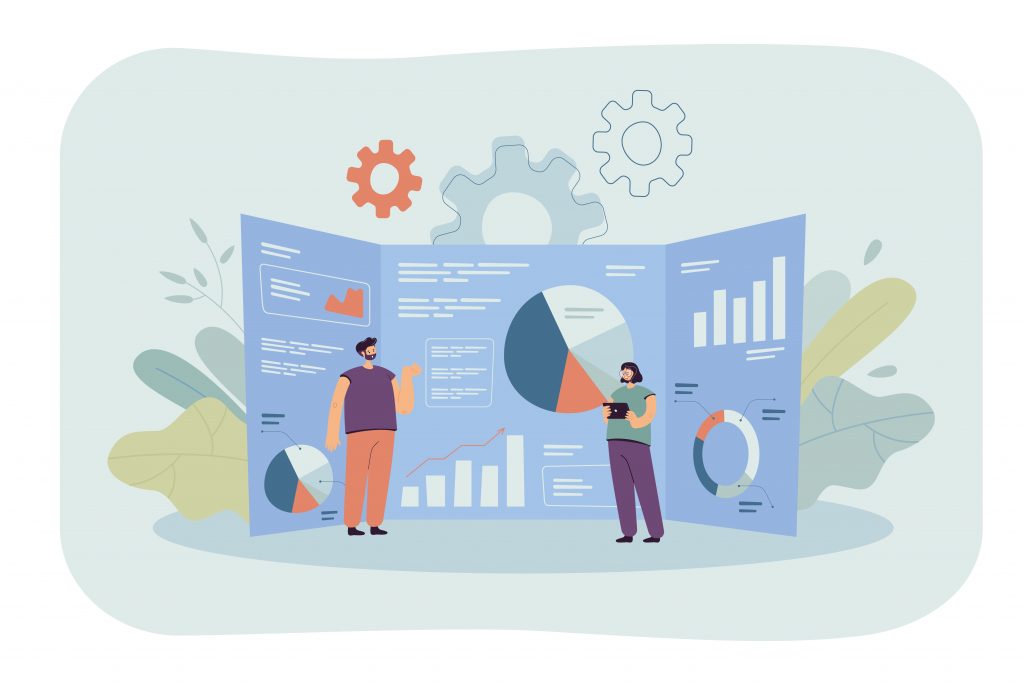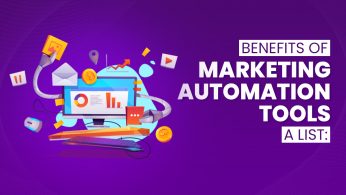
Vital Google Analytics Features for Improved Campaigns
Google Analytics is a tool that businesses should integrate into their marketing campaigns to improve their overall search engine optimization (SEO). Let us discuss some of the vital Google Analytics features that you should monitor and analyze for improved marketing campaigns.
9 Google Analytics Features for Improved Marketing Campaigns
Here are some of the primary Google Analytics features that you and your digital marketing team should focus on to make the most of your marketing efforts:
-
Users
People who interact with your website or application are called Users. Through the Users and Active Users metrics in Google Analytics, you can accurately measure how many people are engaging with your site or app, including the activities that they perform. This Google Analytics feature can identify which traffic belongs to a particular user. Analytics uses a unique identifier that it associates with each user for every hit. This identifier can be a single, first-party cookie called _ga, which stores a Google Analytics client ID. You can use this client ID in conjunction with Google Analytics’ User-ID feature to accurately identify users and the respective devices that they use to access your site or app.
-
Pageviews
Pageview hits (or page tracking hits) are the number of times a page is loaded and reloaded in a browser. Thus, whenever a user clicks the reload button after getting to your page, Google Analytics will count this as another pageview. Subsequently, if the same user visits another page and then returns to the previous page they visited, Google Analytics will count this as another pageview. In relation to this, Unique Pageviews refer to the number of times a user has viewed a particular page. Google Analytics Content Overview report displays the aggregated number of pageviews performed by a user.
-
Bounce Rate
We refer to every single-page session on your website as a bounce. Google Analytics records a bounce when a session triggers only a single request to the Analytics server. For instance, it will register a bounce whenever a user opens a page on your website and exits without performing other actions that trigger other requests to the Analytics server during the said session. As such, the Bounce Rate is the percentage of all sessions on your website where users viewed only one page and triggered only one request to the server. Generally, you do not want your site to have a high bounce rate. You can evaluate why you are getting a high bounce rate through the Audience Overview report, the Channels report, the All Traffic report, and the All Pages report in Google Analytics.
-
Behavior
To get to know more about your users, you can use the Audience reports in Google Analytics. This Google Analytics feature can help you understand the behavior of your users whenever they engage with your site or application. As such, under Audience reports, you can find Behavior, which measures the ability of your website to encourage first-time visitors to return. Here, you can determine the number of your website’s new and returning users. Furthermore, you can check the frequency and recency of their visits and see how they engage with your website. Among the Standard metrics under Behavior include the number of users that engage with your site or app. Also, the number of sessions they create and the web pages they visit.
-
Geographical Data
By importing geographical data into Google Analytics, you can map the geographical IDs to custom regions. Through this, you can generate a report from said your data. The report would help you analyze and improve your marketing campaigns while ensuring that you align them with your business goals and objectives. Google Analytics can show you various geographical dimensions such as City, Country, and Continent, among others from the IP address they automatically derive from a hit. Alternatively, instead of relying on IP-based regions, Google Analytics also allows you to create custom regions where you can map a set of geographical ID dimensions based on the following ID standards: City ID (Geographical Criteria ID), Country ISO Code (ISO-3166-1 alpha-2), Region ID (Geographical Criteria ID), and Sub-Continent Code (UN M.49).
-
Channels
We call Channels the point of interaction with existing customers and prospective clients. In Google Analytics, these channels include Email, Social, and Paid Search. In relation to channels, under the Acquisitions reports of Google Analytics, we can create Channel Groupings. It groups various marketing activities and displays and compares aggregated metrics per channel name, traffic source, medium, and campaign name. Thus, this Google Analytics feature can show you the most common sources of traffic on your site, such as Direct, Organic Search, Social, Email, Affiliates, Referral, Paid Search, Display, and Other Advertising.
-
Source/Medium
When we talk about Source, this is where your site traffic comes from. Sources include site domains (facebook.com) and search engines (Google or Bing). Relatively, a Medium is a category under which a source falls. These include web referrals (referral), organic searches (organic), and cost-per-click paid search ads (CPC). Thus, Source/Medium is a combination of both source and medium. For example, facebook.com/referral or google/organic.
-
Demographics
Through the Demographics feature in Google Analytics, you can track and analyze users according to their age, gender, and interest categories. Analytics gains insight into user interest data through their activities, including purchases and online travels. As such, Google Analytics provides seven standard reports for you to use. First is an overview of your demographics. The overview displays the distribution of Sessions (default key metric) on your property by user age and gender. It also allows you to use other key metrics such as % New Sessions, Avg. Session Duration, Bounce Rate, or Pages per Session. Other standards under Demographics include the following: Age, Gender, Interest Overview, Affinity Categories, In-Market Segments, and Other Categories.
-
Conversions
Conversions are completed activities or transactions that contribute to business growth. By default, Google Analytics predefines conversion events for you. However, this Google Analytics feature also gives you the option to define your conversion events. You can track valuable conversions that take place on your website or application through a configuration setting called Goal. These goals help you evaluate your site or app’s performance in hitting your target objectives. As such, you can set individual goals to track various actions. These include the amount of time they spend on your site. Or the number of pages they view in a session. Thus, whenever a user completes a goal, Google Analytics records a conversion. You can also set your goals to have equivalent monetary values. Doing so helps you see how much a conversion contributes to your business. So, focus more on the highest value conversions.
How to Track Conversions
Here are the ways on how you can track conversions using Google Analytics features:
- If you wish to track purchases, signups, clicks, and other website actions, then you need to set up conversion tracking for your site.
- To know if a customer installs your application or purchases from your website, you can track mobile app conversions with Firebase, track Android app conversions, track iOS app conversions, or track app conversions through third-party app analytics or third-party click-tracking.
- You can also track web or app conversion by measuring web conversions from Google Analytics App + Web properties. Also, you can do this by measuring app conversions from Google Analytics App + Web properties using Firebase SDK.
- Track phone calls from ads or to a phone number on your website. You can also track phone number clicks on a mobile website.
- You can also track offline conversions, such as store visits or phone calls resulting from running your ads.
Improve Marketing Campaigns with these Google Analytics Features
By now, you have a general idea of how these Google Analytics features can benefit your business’s online marketing activities. If you still need help navigating Google Analytics, you can find an SEO Company in the Philippines that will show you how to make the most of this essential SEO tool!
Do you have any other tips on monitoring and analyzing these Google Analytics features? Let us hear them in the comments section below!
















Comment 0